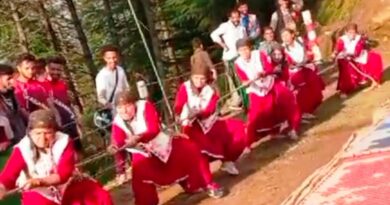Raksha Bandhan festival was celebrated with gusto in Rajgarh
Despite heavy rains, the festival of Raksha Bandhan was celebrated with great enthusiasm in the Rajgarh area of Giripar. Sisters tied rakhi on their brother’s wrist and prayed to God. There was a huge crowd of women and children at the shops to buy rakhi. Women enjoyed free travel in HRTC buses. However, now HRTC buses run on very few village routes. The most important thing is that this time there was no shadow of Bhadra on the festival of Raksha Bandhan, due to which women felt very relieved.
Senior citizens Dayaram Verma and Daulatram Mehta shared their experiences and said that in the past, especially in rural areas, there was no tradition of tying rakhi. On Raksha Bandhan, the priest used to come to the house in the morning and tie the rakhi of mauli in return for which he was given dakshina in the form of grains etc. The practice of sisters tying rakhi to their brothers and observing the fast of Karvachauth started in the 80s.
Who tied the Rakhi first?
According to the Puranas, in Satyug, Goddess Lakshmi tied Rakhi for the first time on the great donor King Bali. According to the legend, King Bali was considered a great donor. To test King Bali, Lord Vishnu took the form of Vaman and asked for three steps of land from King Bali. The king agreed to it. Lord Vaman measured the entire earth in two steps. When the turn for the third step came, King Bali bowed his head and also asked God for a boon that Lord Vishnu would also go to the netherworld with him. When Goddess Lakshmi came to know about this, she took the form of an old woman and tied Rakhi to King Bali in the netherworld on the full moon day of Bhadra month and pleaded to release Lord Vishnu. Similarly, there is a mention of the Rakhi tied by Draupadi to Lord Krishna in the Puranas.



